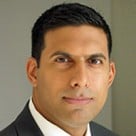The White House and the
November Employment Report
Brookings Institution comments watch the video read the text  Subjectively, the proposal is curiously lacking in measures that might stimulate near-term job growth. Of its three prongs, the first - supporting small business - offers the best prospects of triggering job growth that will benefit office demand directly. Even in this case, however, the plan of action is unclear. Aside from measures that expand on those already in place, including tax breaks on capital gains and enhanced support for Small Business Administration loans, the President only indicated that "it's worthwhile to create a tax incentive to encourage small businesses to add and keep employees, and I'm going to work with Congress to pass one." For millions of unemployed Americans, efforts to reduce the direct costs of payroll growth will not be undertaken soon enough. In the worst case, small businesses will delay hiring in anticipation of accruing some benefit for doing so only after a new program is in place.
Subjectively, the proposal is curiously lacking in measures that might stimulate near-term job growth. Of its three prongs, the first - supporting small business - offers the best prospects of triggering job growth that will benefit office demand directly. Even in this case, however, the plan of action is unclear. Aside from measures that expand on those already in place, including tax breaks on capital gains and enhanced support for Small Business Administration loans, the President only indicated that "it's worthwhile to create a tax incentive to encourage small businesses to add and keep employees, and I'm going to work with Congress to pass one." For millions of unemployed Americans, efforts to reduce the direct costs of payroll growth will not be undertaken soon enough. In the worst case, small businesses will delay hiring in anticipation of accruing some benefit for doing so only after a new program is in place.
The President's address followed the previous Friday's release of the November jobs data. He cited the new data in his Brookings address:
... we're no longer seeing the severe deterioration in the job market that we once were. In fact we learned on Friday that the unemployment rate fell slightly last month. This is welcome news, and news made possible in part by the up to 1.6 million jobs that the Recovery Act has already created and saved according to the Congressional Budget Office.
While the headline results of the labor report suggest a considerable moderation of jobs losses and should be warmly received, further scrutiny reveals that the employment outlook remains mixed, particularly as concerns near-term demand for commercial space.
The November Headlines
Who is Cutting? And Who is Adding?
In the services industries, job losses in sectors including retail trades, information services, financial activities, and leisure and hospitality were more than offset by gains in professional and business services, education and health, and government employment. The net increase in employment totaled 58,000 jobs. Cuts in the retail sector, a moderate leading indicator of retail space demand, included job losses at electronics and appliance stores, grocery stores, and sporting goods, hobby, book, and music stores. The largest offsetting increase in employment was at department stores. In the leisure and hospitality industry, hotel payrolls continue to fall.
Education and healthcare services remain key areas of job growth. The net increase in services employment in November also reflects a spike of almost 87,000 jobs in administrative and support services employment. More than half of this increase, in turn, was in temporary help services. In a related measure from the Household survey, the number of people employed part-time because it was the only work available increased by 8.1 percent between October and November, to 2.2 million persons.
How Many People are Unemployed?
The 10.0 percent unemployment rate captures the share of individuals who are seeking employment as a share of the labor force. Because some people will drop out of the labor market as conditions worsen (this is reflected in the lower participation rate), the unemployment rate tends to underestimate the severity of the labor market's downturn. Including these marginally attached workers and persons working part-time for economic reasons, the alternative measure of labor underutilization in November is 17.2 percent, down from 17.2 percent in October.
Who is Unemployed?
Apartment Renters
How are the Unemployed Faring?
Cover Image
© Touchpoint Markets, All Rights Reserved. Request academic re-use from www.copyright.com. All other uses, submit a request to [email protected]. For more inforrmation visit Asset & Logo Licensing.







